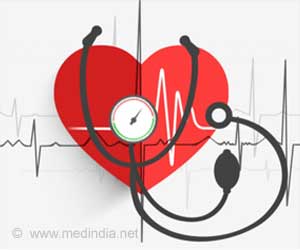Systematic genetic high cholesterol screening at the time of hospitalisation for a heart attack could identify these high-risk patients.

‘Better identification of patients with familial hypercholesterolaemia is needed so that cholesterol lowering treatments can be started as well as recommended lifestyle modifications such as eat a healthy diet, be physically active and quit smoking.’





Patients with FH have high levels of "bad" cholesterol (low-density lipoprotein; LDL) due to a mutation in genes that clear cholesterol from the body. LDL particles accumulate in the blood and can ultimately build up in the coronary artery walls. Children of patients with heterozygous FH have a 50% chance of inheriting the disorder. As LDL cholesterol levels are elevated as early as birth, the risk of heart attack in patients with FH is 10 to 13 times greater than that of the general population. Elevated LDL cholesterol plus family or personal history of early heart disease are key criteria for diagnosis, which may be confirmed by genetic testing. Management of FH includes a healthy lifestyle and medication.
This study examined the frequency of FH in the RICO survey,(2) a large French database of patients hospitalised for a heart attack between 2011 and 2017. The researchers determined whether patients had FH using LDL cholesterol levels and family or personal history of premature coronary artery disease. Treatments, patient characteristics, and severity of coronary artery disease were compared between patients with and without FH.
Among the 11,624 patients with heart attack, FH was not rare (2.1%). When compared to patients without FH, those with FH were 20 years younger (71 versus 51 years) and had more severe coronary lesions.
Senior author Professor Marianne Zeller of the University of Burgundy - Franche-Comté, Dijon, France said: "Taken together, the earlier onset and severe lesions show the aggressive nature of coronary artery disease in patients with familial hypercholesterolaemia."
Advertisement
"Systematic FH screening at the time of hospitalisation for a heart attack could identify these high-risk patients," she continued. "Screening is simple, mainly based on high levels of LDL cholesterol and history of early coronary artery disease (personal and/or family). Diagnosis can be confirmed by a genetic test, which is available in most European countries."
She concluded: "Once we know who the patients are, we can then look for relatives with the condition."
Source-Eurekalert














